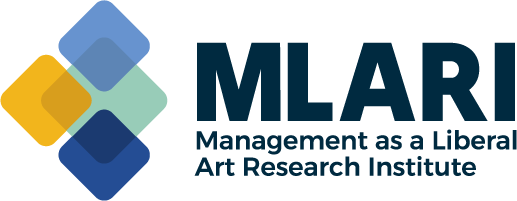The Future of Knowledge Work
PUBLISHED:
In the first installment of this series, I discussed the historical philosophical debates about the nature of knowledge. In Part II, I’d like to discuss the concept of knowledge work and where we might be headed in the future.
Peter Drucker used the term “knowledge work” to describe the shift in the American economy from industrial manufacturing to service sector organizations. In America’s industrial society of the first half of the twentieth century, technological advances were driven by production needs. Knowledge was applied to work. In the early 1900s, knowledge focused on making people more productive. Frederick Taylor’s work in scientific management and others’ studies of motivation aimed at making human beings more efficient producers of physical goods. Later, processes would be automated using new technologies.
By the end of the twentieth century, the nature of work had changed. Manufacturing employment was declining, and Drucker’s “knowledge work” was ascending (Drucker, 1993). People used their education and minds, not just their bodies, to produce. And, in many cases, they were not producing goods, but instead they were producing services. This resulted in a shift from applying knowledge to work to applying knowledge to knowledge. Work, which for centuries had been defined through physical effort, sweat and calloused hands (and had, by the way, been disdained by the upper class in many societies historically) was now the domain of the educated elite. To Drucker, this represented a massive historical, social, and economic shift that required a multi-pronged response.
Knowledge work in the late twentieth century presented new management challenges. Drucker’s early writing focused on the management of industrial workers who physically produced cars or other goods (Drucker, 1954). These employees worked in organizations with levels of management from the production floor to the executive offices. Traditionally, manual workers were viewed as needing direct oversight of the manufacturing process to ensure production quantities and quality. The new knowledge workers were no longer employees needing direct supervision. Instead, they were independent, possessing specialized knowledge in areas outside of management’s expertise. Knowledge work was self-contained and portable, yet required access to organizations to be effective.
As we shall see, we perhaps are facing a similar tectonic shift in the nature of work in the post-COVID pandemic world that seeks to understand the nature of work. In Drucker’s era, the shift to knowledge work involved a massive reconfiguration of the nature of “labor.” In a post-capitalist society, knowledge was now just as important an input as labor and capital. In our post-COVID society, we are struggling to find the terminology to describe the future of knowledge work in organizations that must be resilient, less focused on structure, more creative, and open to new ways of seeing knowledge work.
Following the COVID 19 pandemic, many organizations are having difficulty with getting knowledge workers to return to the office. Workers in many ways are even more independent than in Drucker’s era, as they possess technologies and skills that allow them to work almost anywhere and collaborate with others outside of a physical centralized workspace. In many cases, contemporary knowledge workers no longer need physical access to organizations to be effective; the rate of new business starts increased dramatically during and immediately after the pandemic, as employees who were laid off or unhappy in their positions decided to go out on their own (https://hbr.org/2024/01/how-the-pandemic-rebooted-entrepreneurship-in-the-u-s#:~:text=Data%20from%20the%20OECD%20show,doors%20than%20before%20the%20pandemic.). Remote work has become increasingly common and yet it presents new challenges to organizations with respect to data security and privacy issues. The portable nature of knowledge work has only become more exaggerated, and while it may seem self-contained, it is in fact less so than it has ever been. Knowledge is easily shared, a fact that increasingly exposes information and data to hacking and other security breaches.
During the 20th-century knowledge work was inherently different from manual labor in terms of the aspect of motivation. While Drucker in the 1950s made the case for a plant community where workers could find status and function within the manufacturing organization, he came to the realization that industrial labor, with its increased routinization, could not provide this kind of fulfillment (Drucker, 1950). Industrial workers needed to be treated with dignity and given opportunities to make a contribution to the mission of the organization. While the work itself may not necessarily be stimulating, blue-collar workers could find status and meaning through understanding their role in furthering the mission and purpose of the organization. On the other hand, knowledge work typically was motivating in and of itself; knowledge workers needed little motivation to actually perform their work. However, the challenge was to align knowledge work with the organizational mission and to prevent siloing of specialized knowledge areas (Drucker, 1993). Thus, while knowledge workers may motivate themselves to perform tasks, they may not necessarily do the work that the organization needs to further its goals, unless they understand the larger organizational mission.
Knowledge worker motivation in the twenty-first century has become increasingly delicate as organizations face phenomena such as quiet quitting, where some employees put in the minimum effort required as a backlash against hustle culture. Particularly after the experience of remote work during the COVID 19 pandemic, many knowledge workers have been considering the importance of work-life balance, and are resisting efforts to increase their workload. In response to the phenomenon of disengagement at work, many managers have increased their level of supervision, calling for more meetings and in-person gatherings. As a result, many knowledge workers feel that their productivity has decreased and that they are being micromanaged (https://www.forbes.com/sites/bryanrobinson/2023/12/14/forget-quiet-quitting-in-2024-employees-want-employers-to-quietly-manage/?sh=4000c0386523).
Drucker called making knowledge work productive the greatest challenge faced by organizations in the twenty-first century (Drucker, 1999). Knowledge-worker productivity was a completely new concept for twentieth-century management. And manual worker productivity was measured in terms of output quantity; knowledge worker productivity involved measurements of quality. Because knowledge workers did not function as traditional employees with direct supervisors, they were responsible for their own productivity (and knew better than their managers how to measure it). For this reason, Drucker emphasized the importance of managing oneself; knowledge workers had autonomy to decide how to work, but also responsibility for ensuring their own performance was in accordance with agreed-upon measurements.
With the rise of remote and hybrid work, knowledge-worker productivity is today a primary concern for organizations. While many employees believe that they are more productive with flexible schedules, often working in hybrid roles, research indicates that their bosses don’t believe this to be true (https://www.forbes.com/sites/glebtsipursky/2022/11/03/workers-are-less-productive-working-remotely-at-least-thats-what-their-bosses-think/?sh=4fe1c43b286a). The subsequent increase in monitoring of remote employees, or demand for more time in the office, has strained relations between knowledge workers and their managers, exposing a rift based on a lack of trust. Interestingly, more and more people who study management are pointing to the need for more flexibility and innovation in organizations, and less reliance on rigid structures and authoritarian models of hierarchy. The pandemic has forced organizations to re-evaluate the nature of knowledge work and productivity. While human connection is important, many knowledge workers are indeed more productive when they are freed from restrictive scheduling demands and constant check ins.
It seems clear that the trends that Drucker observed with respect to knowledge work and workers will continue to present dilemmas to organizations. As he pointed out, knowledge work presented several management challenges, and these have only increased since Drucker wrote on the subject. Recognizing that knowledge work is highly autonomous, yet needs to be aligned with a team or organizational mission, can only help highlight the importance of motivation and managing productivity. Perhaps if we go back to the roots of knowledge work and workers in Drucker’s writings, we can gain insight on how to move forward more effectively to face the future of work.
Next time: The role of discernment and wisdom in human reason
Sources
Drucker, P.F. (1950). The new society. Harper & Brothers.
Drucker. P.F. (1954). The practice of management. Harper & Row.
Drucker, P.F. (1993). Post-Capitalist society. Harper Collins.
Drucker, P.F. (1999). Management challenges for the 21st century. Harper Collins.
Fikri, K. & Newman, D. (2024). How the pandemic rebooted entrepreneurship in the U.S. Harvard Business Review, Jan. 17 (https://hbr.org/2024/01/how-the-pandemic-rebooted-entrepreneurship-in-the-u-s#:~:text=Data%20from%20the%20OECD%20show,doors%20than%20before%20the%20pandemic.).
Robinson, B. (2023). Forget ‘quiet quitting.’ Most employees want employers to ‘quietly manage.’ Forbes, Dec. 14 (https://www.forbes.com/sites/bryanrobinson/2023/12/14/forget-quiet-quitting-in-2024-employees-want-employers-to-quietly-manage/?sh=4000c0386523)
Tsipursky, G. (2022). Workers are less productive working remotely (at least that’s what their bosses think). Forbes, Nov. 3, https://www.forbes.com/sites/glebtsipursky/2022/11/03/workers-are-less-productive-working-remotely-at-least-thats-what-their-bosses-think/?sh=4fe1c43b286a





